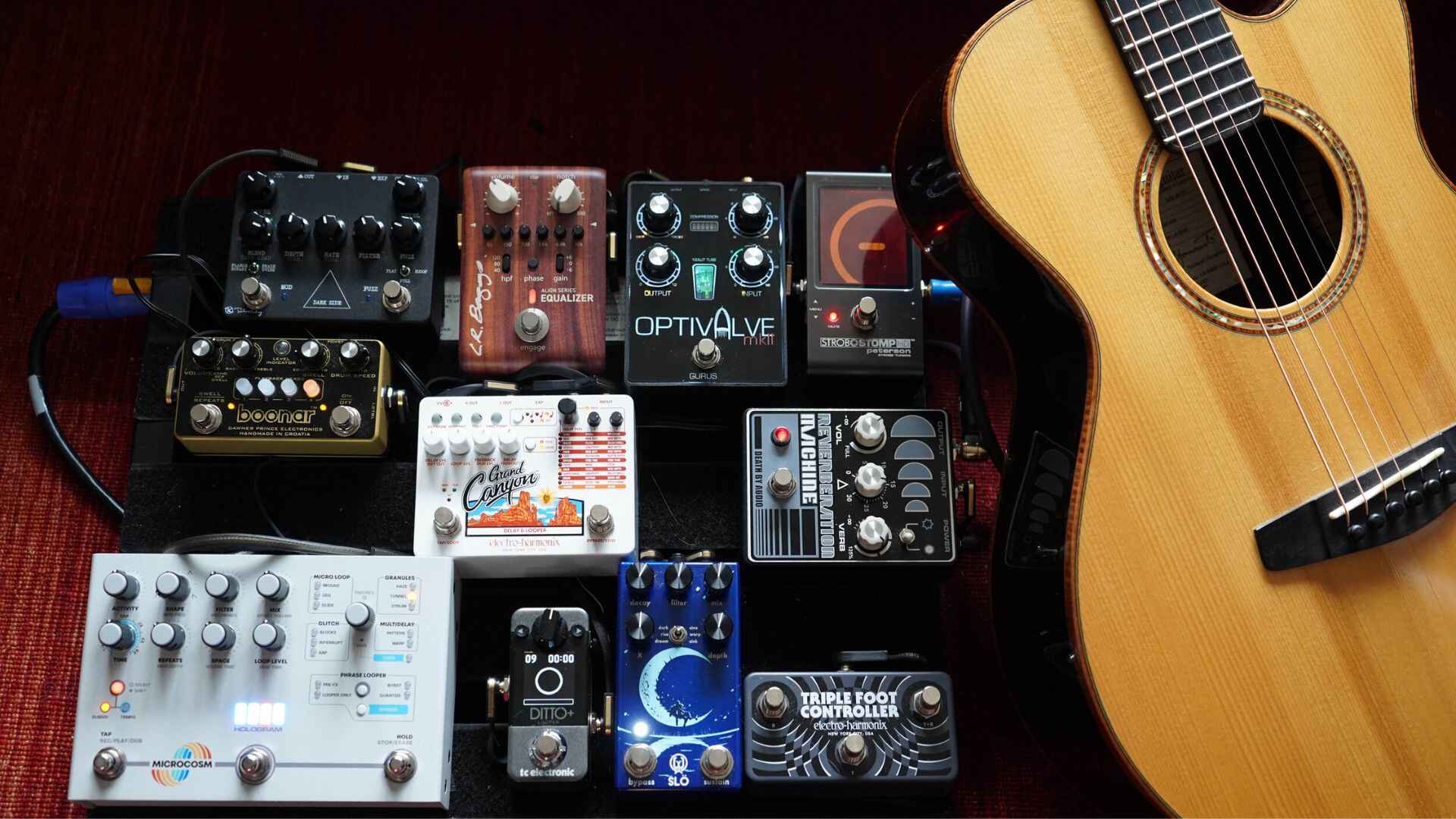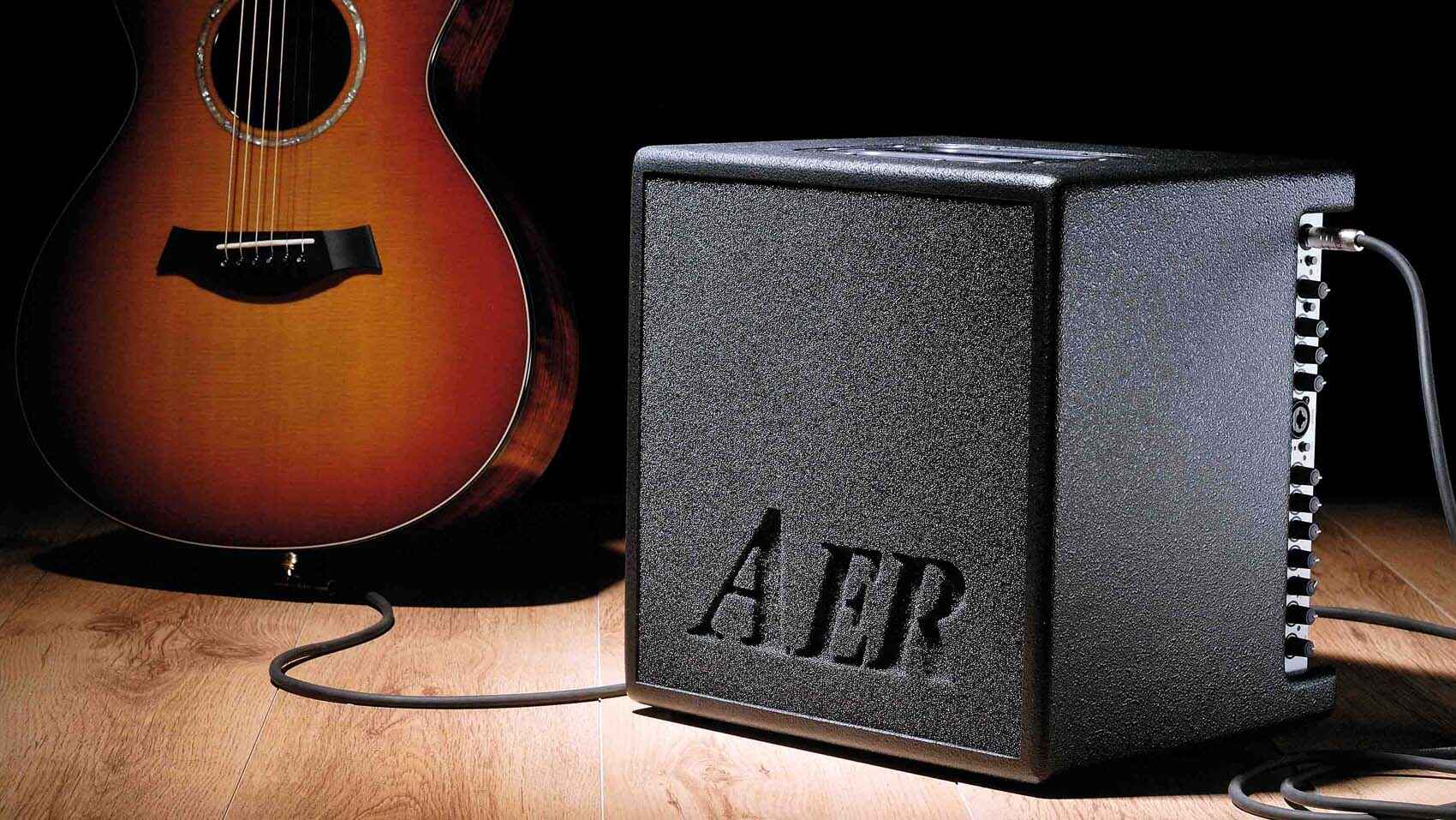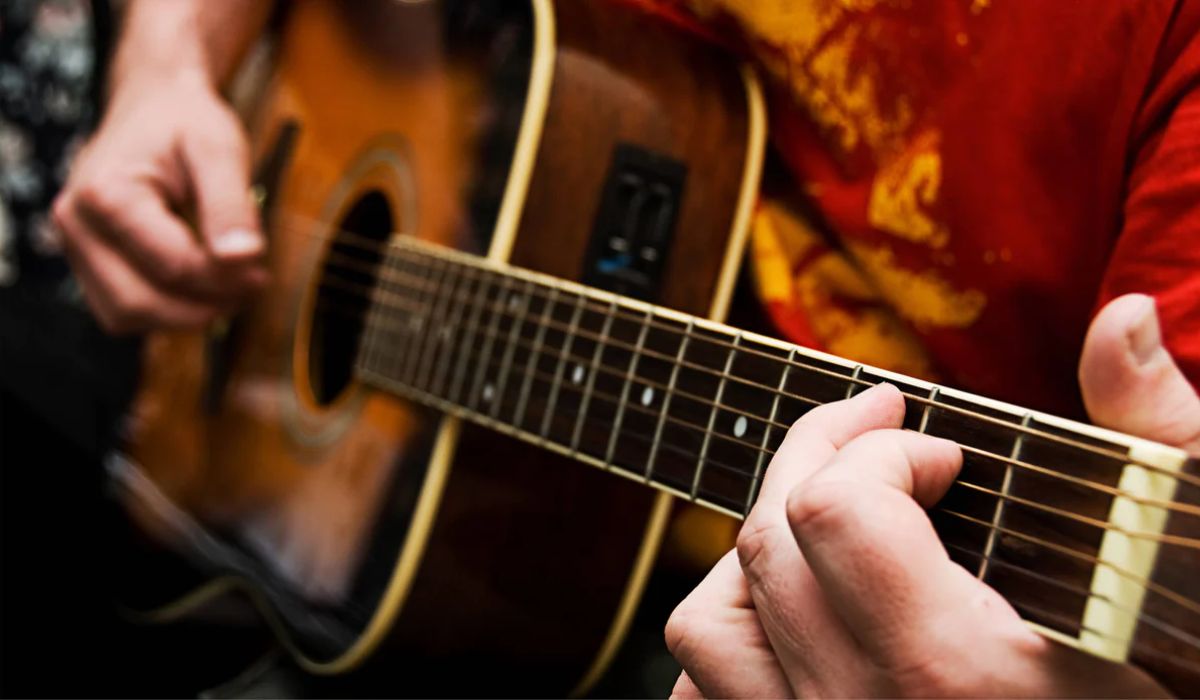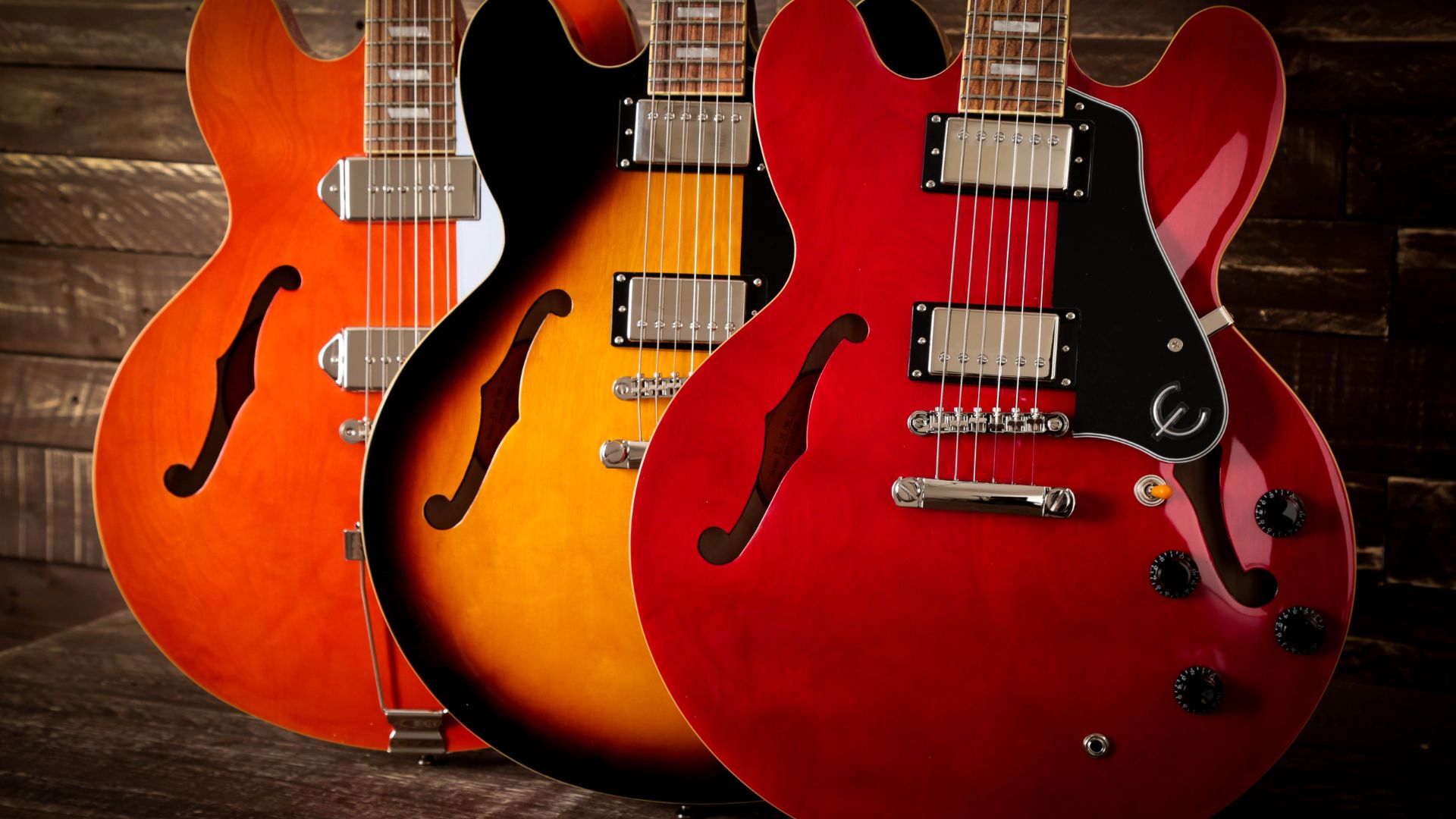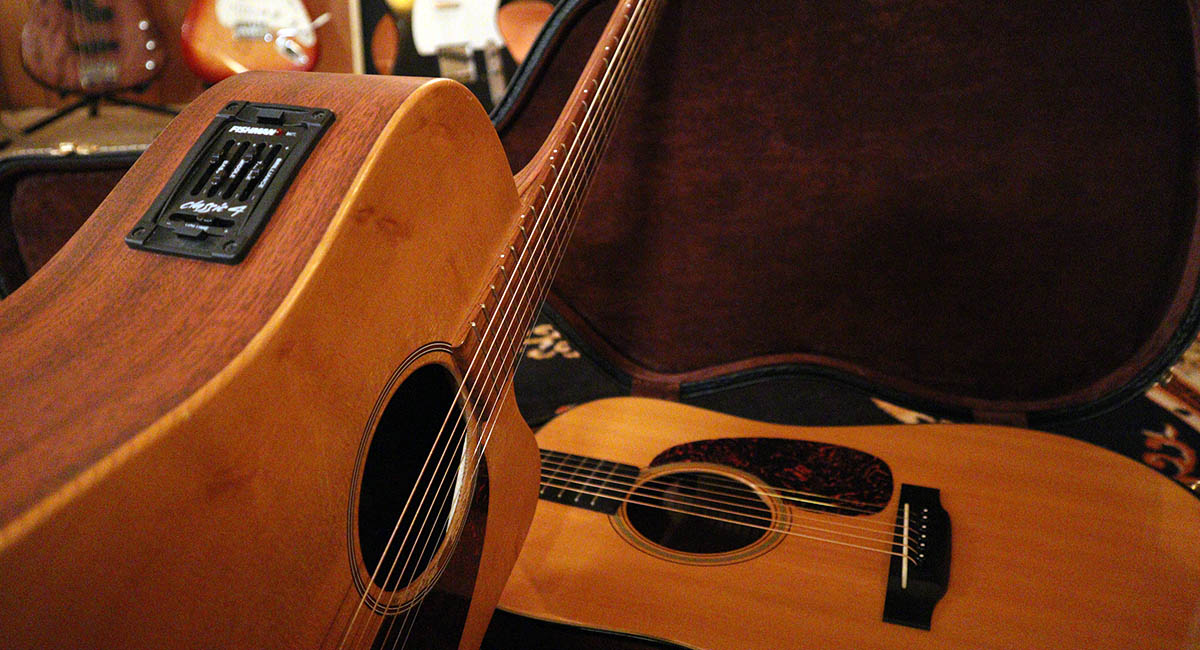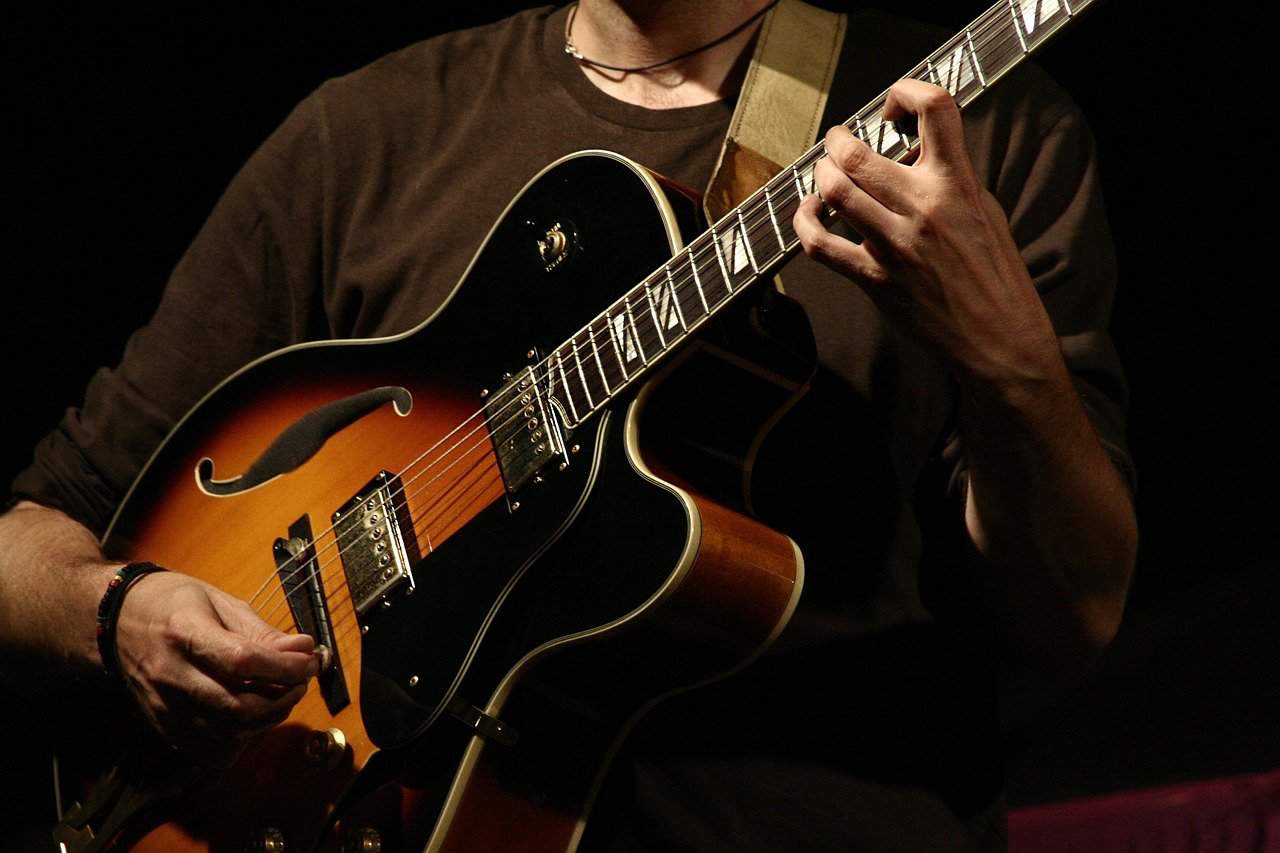Introduction
Welcome to our guide on how to stop feedback on acoustic guitar! If you’ve ever played your acoustic guitar through an amplifier or sound system, you may have encountered an annoying high-pitched squeal or howling sound coming from the instrument. This phenomenon is known as feedback, and it can be a frustrating obstacle for guitarists looking to achieve the perfect sound.
Feedback occurs when the sound from your guitar is picked up by the microphone or pickups and then amplified. The amplified sound is then picked up by the guitar again, creating a loop of sound that results in that screeching feedback noise. While feedback is a common issue for acoustic guitar players, there are several techniques and strategies you can employ to minimize or even eliminate it altogether.
In this guide, we will take a closer look at the causes of feedback and explore various ways to combat it. We’ll discuss adjusting the guitar position, microphone placement, using feedback-reducing devices, controlling volume and EQ, experimenting with different strings, and utilizing feedback control techniques. By incorporating these tips into your playing routine, you’ll be able to enjoy a clear and feedback-free sound from your acoustic guitar.
Whether you’re a beginner or an experienced guitarist, this guide is designed to help you understand the factors that contribute to feedback and provide you with practical solutions to overcome this common challenge. So, let’s delve into the world of feedback and discover how to stop it from interfering with your acoustic guitar playing!
Understanding Feedback
Before we dive into the various methods to stop feedback on your acoustic guitar, it’s important to have a clear understanding of what feedback is and how it occurs. Feedback is the result of a sound loop that forms between your guitar and the amplifier or sound system. When the sound from your guitar is amplified and fed back into the instrument, it creates a self-sustaining loop that generates that unpleasant screeching noise.
Feedback is primarily caused by the resonance frequencies of your guitar and the amplification system. These frequencies are determined by the size, shape, and materials used in the construction of your guitar and the characteristics of the room in which you are playing. When the amplified sound matches the resonant frequencies of the guitar, feedback occurs.
Understanding the interaction between your guitar and the amplification system is crucial in tackling feedback issues. It’s important to note that different guitars and different venues may produce varying feedback frequencies. This makes it necessary to adapt and experiment with different techniques and solutions.
Feedback can be categorized into two primary types: low frequency and high frequency. Low-frequency feedback generally occurs when the sound waves from the guitar vibrate the top or the body of the instrument, creating a boomy or growling noise. On the other hand, high-frequency feedback is typically caused by the resonant frequencies of the strings or body of the guitar, resulting in that piercing screeching sound.
By identifying the type of feedback you’re experiencing, you can better understand the specific causes and take appropriate measures to address it. This knowledge will allow you to implement targeted solutions and minimize the occurrence of feedback during your performances.
Next, we’ll explore in detail the different factors that contribute to feedback and provide practical techniques to overcome this challenge. From adjusting the guitar position to utilizing feedback control techniques, we’ll equip you with the knowledge and tools needed to achieve a feedback-free acoustic guitar sound.
Causes of Feedback
Now that we have a basic understanding of what feedback is, let’s take a closer look at the various causes that contribute to this issue. By identifying the specific factors that lead to feedback, you’ll be better equipped to address and prevent it.
1. Guitar Resonance: The resonance frequencies of your acoustic guitar can play a significant role in causing feedback. Different acoustic guitars have different characteristic resonances based on factors such as body size, shape, tonewoods, and bracing. Certain frequencies may resonate more strongly, leading to feedback issues. Experimenting with different guitars and identifying the resonant frequencies of each instrument can help you find a guitar that is less prone to feedback.
2. Amplification System: The quality and setup of your amplification system can also contribute to feedback. Poorly positioned or low-quality microphones, inadequate EQ settings, or improper gain staging can all amplify the occurrence of feedback. Ensure that your amplification system is properly set up and optimized for your acoustic guitar to minimize feedback.
3. Room Acoustics: The environment or venue in which you are performing can greatly influence feedback. Different rooms have different acoustic properties, and some may naturally amplify or resonate certain frequencies. Factors such as room size, reflective surfaces, and the placement of speakers and microphones can all impact feedback. Consider the acoustics of the room and make adjustments as necessary to minimize feedback issues.
4. Proximity to Amplifier: The positioning of your acoustic guitar in relation to the amplifier or speakers can contribute to feedback. Placing your guitar too close to the amplifier increases the chances of the sound being picked up and amplified again, leading to feedback. Experiment with the distance between your guitar and the amplifier to find the sweet spot where feedback is minimized.
5. String Vibration: The vibration of the guitar strings can also generate feedback. When the strings vibrate at certain frequencies, they can resonate with the body or other components of the guitar, creating a feedback loop. This is more common with certain string types and gauges. Trying out different strings and gauges can help reduce the occurrence of string-induced feedback.
By understanding the various causes of feedback, you can take a systematic approach to address and prevent it. In the following sections, we’ll explore different techniques and strategies to combat feedback, enabling you to achieve a clean and clear sound from your acoustic guitar.
Adjusting the Guitar Position
One of the first steps in combating feedback on your acoustic guitar is to experiment with adjusting the position of your instrument. The positioning of your guitar in relation to the microphone or amplifier can have a significant impact on the occurrence of feedback. Here are a few tips to help you find an optimal guitar position:
1. Off-Axis Positioning: Instead of pointing the soundhole of your guitar directly at the microphone or amplifier, try positioning it slightly off-axis. This means angling the guitar slightly away from the sound source. This helps to reduce the direct sound hitting the microphone, minimizing the chances of feedback.
2. 90-Degree Angle: Another effective technique is to position the guitar at a 90-degree angle to the microphone or amplifier. This creates a side-to-side angle between the sound source and the pickup or microphone, reducing the chances of direct sound hitting the mic and causing feedback.
3. Distance from the Amplifier: Increasing the distance between your acoustic guitar and the amplifier can also help minimize feedback. The farther away your guitar is from the amplifier, the less likely it is for the sound to be picked up and amplified again, reducing the chances of feedback.
4. Monitor Speaker Position: If you’re using stage monitors for your acoustic guitar, pay attention to their positioning. Placing the monitor speakers behind you or to the side rather than directly in front can help prevent the sound from your guitar being captured by the microphones and causing feedback.
5. Experimentation: Each guitar and amplifier setup may have its unique considerations when it comes to positioning. It’s important to experiment and find the optimal position that works best for your specific setup. Try different angles, distances, and orientations to find the sweet spot where feedback is minimized.
By making adjustments to the position of your guitar, you can reduce the chances of the sound being picked up and amplified again, minimizing feedback. This technique may require some trial and error to find the ideal positioning for your specific setup, but the effort will be well worth it in achieving a feedback-free acoustic guitar sound.
Dealing with Microphone Placement
Microphone placement plays a crucial role in capturing and amplifying the sound of your acoustic guitar. Properly positioning the microphone can help minimize feedback and achieve the desired sound. Here are some tips for dealing with microphone placement to reduce feedback:
1. Distance from the Soundhole: When using a microphone to amplify your acoustic guitar, avoid placing it directly in front of the soundhole. The soundhole produces a lot of low-frequency energy that can easily overload the microphone and cause feedback. Instead, position the microphone slightly off-axis, pointing towards the bridge or fingerboard. This helps capture a balanced sound and reduces the chances of feedback.
2. Microphone Proximity: Experiment with the distance between the microphone and your acoustic guitar. Placing the microphone too close can result in a stronger signal, increasing the risk of feedback. Start by positioning the microphone a few inches away and gradually move it closer until you achieve the desired sound without excessive feedback. Finding the right balance of proximity is crucial for reducing feedback while maintaining a clear and accurate representation of your guitar’s tone.
3. Angle and Orientation: Consider the angle and orientation of the microphone in relation to your acoustic guitar. Tilting the microphone slightly downward can help minimize feedback by reducing the direct sound hitting the microphone capsule. Additionally, positioning the microphone slightly off-axis, at a 45-degree angle, can capture a more balanced sound by picking up both the guitar’s soundboard and the strings.
4. Use of Microphone Shields or Windscreens: If you’re experiencing persistent feedback issues, consider using microphone shields or windscreens. These accessories can help reduce the amount of unwanted sound reaching the microphone capsule, thereby minimizing feedback. They come in various shapes and sizes and can be easily attached to the microphone for added protection against feedback.
5. Monitor Feedback: Keep a close eye (or rather, ear) on the sound coming from the monitor speakers. If you notice any feedback, adjust the microphone placement accordingly. Making subtle changes to the microphone position can help minimize the chances of feedback occurring during your performance.
Remember that microphone placement is a blend of art and science. Finding the optimal position for your specific guitar and microphone setup may require experimentation. Take the time to try different placements, angles, and distances until you achieve a balanced sound without feedback.
Using Feedback Reducing Devices
If you’re consistently struggling with feedback issues while playing your acoustic guitar, using feedback reducing devices can be a valuable solution. These devices are designed to minimize or eliminate feedback, allowing you to enjoy a clear and uninterrupted sound. Here are some popular feedback reducing devices worth considering:
1. Soundhole Covers: Soundhole covers are simple devices that can be placed over the soundhole of your acoustic guitar. They help in reducing or eliminating low-frequency feedback by dampening the sound produced by the guitar’s soundboard. Soundhole covers are particularly effective when playing at higher volumes or with amplification.
2. Feedback Busters: Feedback busters (also known as soundboard feedback reducers) are similar to soundhole covers but are specifically designed to target high-frequency feedback. These devices are made of foam or rubber and are inserted into the soundhole, absorbing and preventing the resonance of certain frequencies that contribute to feedback.
3. EQ and Feedback Reducer Pedals: There are a variety of EQ and feedback reducer pedals available on the market that can help you combat feedback. These pedals allow you to manually adjust the frequencies being amplified, giving you greater control over your guitar’s sound and reducing the likelihood of feedback occurring. Some models even have dedicated feedback suppression algorithms to automatically detect and eliminate feedback frequencies.
4. Soundboard Transducers: Soundboard transducers are pickups that are placed directly on the surface of the guitar’s soundboard, effectively capturing the vibrations and eliminating the need for a separate microphone. These pickups are designed to minimize feedback by focusing solely on the natural resonance of the guitar and reducing external sound interference.
5. Feedback Elimination Systems: Advanced feedback elimination systems use sophisticated algorithms and electronic components to automatically detect and suppress feedback frequencies. These systems are typically found in high-end audio equipment and provide a comprehensive solution to feedback issues. They are often used in professional live sound applications and can significantly enhance the performance of acoustic guitarists in challenging environments.
When choosing a feedback reducing device, consider factors such as your playing style, budget, and specific feedback concerns. Experimenting with different devices and setups will help you find the solution that works best for you. Remember that these devices are meant to assist in minimizing feedback, but they may not entirely eliminate it. It’s important to combine their use with other techniques and adjustments to achieve the best results.
Now that we have explored feedback reducing devices, let’s move on to other techniques for controlling feedback on your acoustic guitar.
Controlling Volume and EQ
Controlling the volume and EQ settings of your acoustic guitar is another effective strategy for minimizing feedback. By properly adjusting these parameters, you can achieve a well-balanced sound while reducing the chances of feedback. Here are some tips to help you control volume and EQ:
1. Volume Control: If you’re experiencing feedback issues, consider reducing the volume of your acoustic guitar. Lowering the volume can help prevent the sound from being picked up and amplified again, thereby reducing feedback. Additionally, playing with a lighter touch can minimize the vibrations that contribute to feedback, especially when using high gain or amplification.
2. EQ Settings: Experimenting with the EQ settings of your amplifier or sound system can significantly impact feedback. Pay attention to the frequency ranges that are prone to feedback and adjust your EQ accordingly. Reducing the gain or cutting specific frequency bands can help minimize feedback without compromising the overall tone of your guitar.
3. Notch Filters: Some amplifiers or sound systems come equipped with notch filters, which are specifically designed to target and reduce feedback frequencies. Notch filters allow you to identify and attenuate problematic frequencies that cause feedback, providing a more focused approach to feedback control.
4. Feedback Suppression Pedals: Feedback suppression pedals are a convenient tool for instantly controlling feedback. These pedals automatically detect and attenuate feedback frequencies, allowing you to focus on your performance without worrying about feedback interruptions. They can be a valuable addition to your setup, especially in live performance situations where quick feedback control is essential.
5. Monitor Mix: Pay attention to the mix between your guitar and monitor speakers. If the monitor volume is too high, it can contribute to feedback. Ensure that the monitor speakers are set at an appropriate level and not overpowering the sound of your guitar. A well-balanced mix can help prevent feedback and maintain clarity.
Remember that controlling volume and EQ is a delicate balancing act. Adjusting these parameters will involve some trial and error to find the optimal settings for your specific guitar and performance situation. Take the time to experiment and make subtle adjustments to achieve the desired sound while minimizing feedback.
In the next section, we’ll explore the role of different strings and how they can impact feedback on your acoustic guitar.
Experimenting with Different Strings
When it comes to minimizing feedback on your acoustic guitar, the choice of strings can make a significant difference. Each type of string material and gauge produces unique tonal characteristics and interacts differently with the guitar’s body and pickups, which can affect feedback. Here are some tips for experimenting with different strings to reduce feedback:
1. String Material: Different string materials, such as phosphor bronze, bronze, or coated strings, can have varying effects on feedback. Phosphor bronze strings, for example, are known for their balanced tone and reduced susceptibility to feedback. Experiment with different string materials to find the ones that work best for your playing style and help minimize feedback.
2. String Gauge: The gauge or thickness of the strings can also impact feedback. Thicker strings generally produce a louder and more resonant sound, which can increase the chances of feedback. Consider trying lighter gauge strings to minimize string-induced feedback. It’s important to note that lighter gauge strings may have a slightly different tone and feel, so it’s essential to find the right balance based on your personal preferences.
3. Coated Strings: Coated strings feature a layer of protection, such as polymer or Teflon, that helps prevent dirt, sweat, and other debris from accumulating on the strings. This can enhance the lifespan of the strings and maintain their tonal quality over time. Additionally, the coating can reduce finger noise and string squeak, which can contribute to feedback. Experimenting with coated strings may help in minimizing feedback during performances.
4. Hybrid String Sets: If you find it challenging to strike a balance between minimizing feedback and achieving the desired tone, consider using hybrid string sets. These sets consist of different gauge strings for each string, allowing you to enjoy the benefits of lighter gauge strings while maintaining a fuller tonal range on the bass strings. This can be particularly useful for acoustic guitarists looking to reduce feedback without sacrificing tonal characteristics.
5. Personal Preference: Ultimately, the choice of strings will depend on your personal preference and playing style. Every guitarist has unique tonal preferences, and what works best for one player may not work for another. Take the time to experiment with different string brands, materials, and gauges to find the combination that suits your playing style, minimizes feedback, and delivers the desired sound.
By exploring different string options, you can find the perfect match that helps minimize feedback while offering a tone and feel that enhances your acoustic guitar playing experience.
In the next section, we’ll delve into various feedback control techniques to further assist you in achieving a feedback-free sound.
Utilizing Feedback Control Techniques
While there are several hardware and equipment-based solutions to minimize feedback, it’s also crucial to develop and employ effective feedback control techniques during your acoustic guitar performances. These techniques can help you prevent and address feedback issues in real-time. Here are some valuable feedback control techniques to consider:
1. Strategic Hand Positioning: The position of your hands on the guitar can impact feedback. When playing, try to avoid covering the soundhole with your strumming hand as this can lead to feedback by obstructing the sound projection. Keep your strumming hand slightly away from the soundhole to allow the sound to resonate freely.
2. Strategic Body Positioning: Experiment with your body positioning while playing the guitar. Face your guitar slightly away from the speakers or amplifier to reduce the chances of direct sound hitting the pickups or microphones. Additionally, keeping the back of the guitar away from your body can also help minimize feedback by preventing excessive resonation and vibration.
3. Controlling your Guitar’s Dynamics: Being mindful of your playing dynamics can significantly impact feedback. Avoid aggressive strumming or plucking techniques that produce excessive vibrations, which can contribute to feedback. Additionally, using a lighter touch and adjusting your playing style to the specific venue and amplification setup can help prevent feedback from occurring.
4. Utilizing Feedback as a Tool: Sometimes, feedback can be used creatively to enhance certain parts of a performance. By controlling the feedback intentionally, you can incorporate it as an expressive tool. Experiment with controlled feedback during specific sections or solos to add texture and dynamics to your playing while maintaining control over the overall sound.
5. Improving Room Acoustics: If you frequently perform in a specific venue, consider investing in acoustic treatment to improve the room’s sound characteristics. Adding absorptive materials to reduce reflections or using diffusers to distribute sound evenly can help minimize feedback by creating a more controlled acoustic environment.
Remember, mastering feedback control techniques takes practice and experience. It’s essential to be attentive and adaptable during your performances, making necessary adjustments based on the specific venue, equipment, and playing situation.
By combining these feedback control techniques with the hardware and equipment solutions we’ve explored earlier, you’ll be well-prepared to achieve a feedback-free sound and enjoy a seamless acoustic guitar playing experience.
Conclusion
Feedback can be a frustrating challenge for acoustic guitarists, but with the right techniques and tools, it can be successfully minimized or even eliminated. By understanding the causes of feedback and implementing effective strategies, you can achieve a clear and feedback-free sound from your acoustic guitar.
In this guide, we have explored various methods to combat feedback. We discussed adjusting the guitar position, optimizing microphone placement, utilizing feedback reducing devices, controlling volume and EQ settings, experimenting with different strings, and employing feedback control techniques. Each of these techniques plays a crucial role in minimizing feedback and allowing you to enjoy a flawless acoustic guitar performance.
Remember that finding the right solution for your specific setup may require some trial and error. Every guitar, amplifier, venue, and playing style is unique, and what works for one person may not work for another. Be patient and willing to experiment to find the combination of techniques and tools that work best for you.
As you continue your journey as an acoustic guitarist, keep honing your skills and exploring new methods to tackle feedback. Whether you’re playing in a small intimate setting or on a big stage, the ability to control feedback will greatly contribute to your overall performance and the quality of your sound.
Armed with the knowledge and techniques provided in this guide, you’re well-equipped to conquer feedback and confidently showcase the beauty of your acoustic guitar. Embrace the challenge, and enjoy the process of mastering the art of feedback control.
Now, go forth and play with confidence, knowing that you have the tools to stop feedback on your acoustic guitar!









